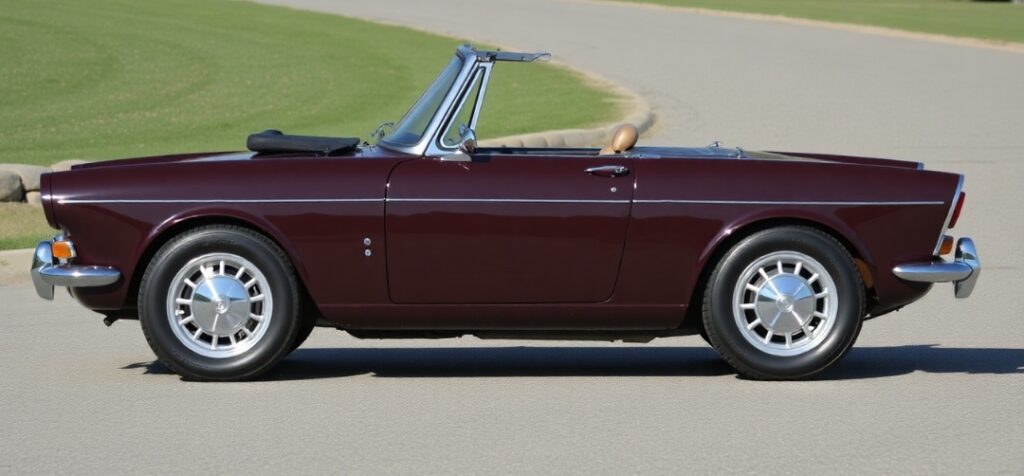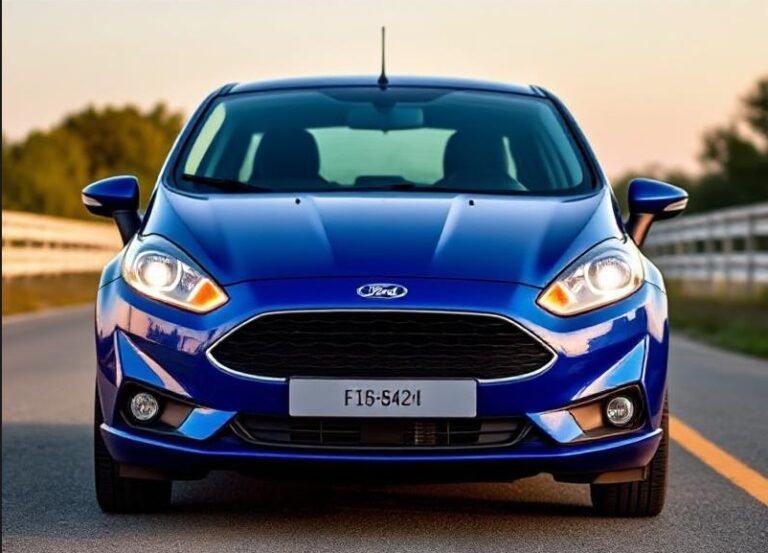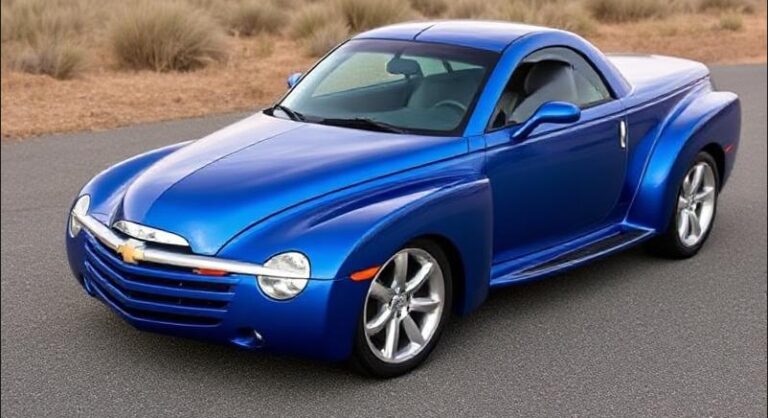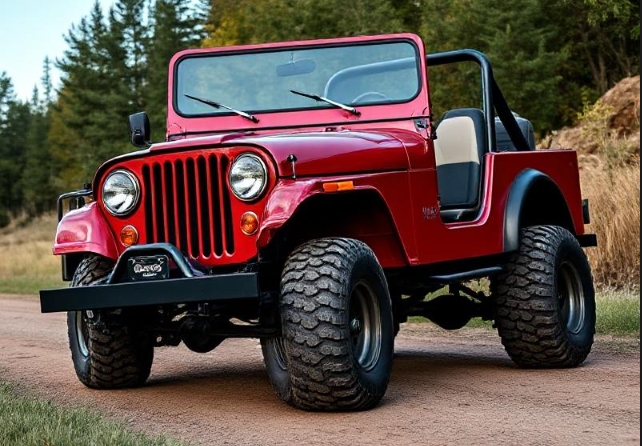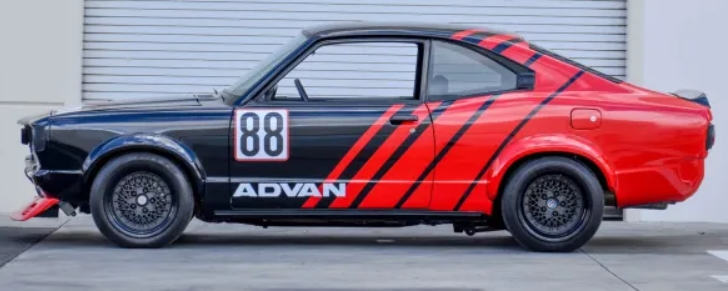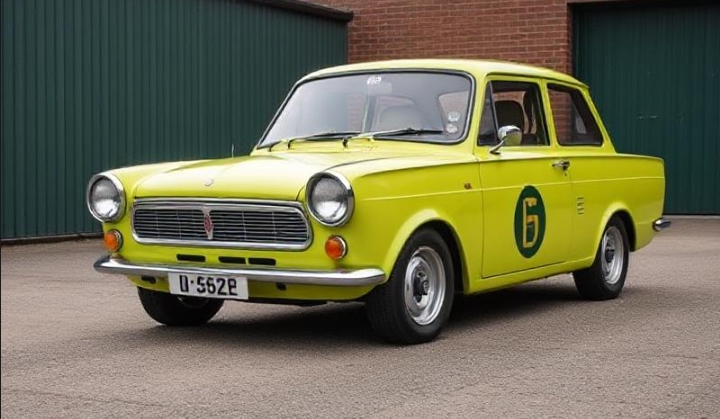From Racing Roots to Roadgoing Elegance: The Evolution of the Sunbeam Alpine
The Sunbeam Alpine, a name synonymous with British sporting elegance and a touch of adventurous spirit, boasts a rich history intertwined with motor racing and a dedicated following. This article delves into the evolution of this iconic roadster, tracing its journey from its competitive beginnings to its enduring legacy, examining the various models, trim levels, and the pivotal moments that shaped its character.
Early Days: The Alpine’s Racing Genesis (1953-1955)
The story of the Sunbeam Alpine doesn’t begin with a production car; it starts on the race track. The name “Alpine” was first employed by the Rootes Group in 1953 for a special competition version of their Sunbeam-Talbot. This purpose-built machine, designed to conquer the gruelling Alpine Rally, was the brainchild of Rootes’ Managing Director, Sir William Rootes. The aim was to build a car that could compete effectively in international rallying events, showcasing the company’s engineering prowess and promoting the brand.
The original Alpine race car, based on the Sunbeam-Talbot 90, featured a modified chassis, a higher-compression engine, and a lightweight body. This was no ordinary road car; it was a meticulously crafted racer designed for performance and reliability over challenging terrain. The car’s success in the Alpine Rally, finishing in the top ranks, solidified its reputation and sparked the desire for a road-going version that could capture the same spirit of adventure.
The Mark I Alpine: A Roadster is Born (1953-1955)
The positive response to the rally car paved the way for the introduction of the first production Sunbeam Alpine, the Mark I, in 1953. While the racing heritage was undeniable, the Mark I was designed to be a more refined roadster, aimed at the discerning enthusiast. It was a beautiful car, instantly recognizable with its elegant lines and convertible roof.
Key Features of the Mark I:
- Engine: Initially powered by a 2,267 cc (138 cu in) four-cylinder engine producing approximately 80 horsepower. This engine was later upgraded to a more powerful 2,267 cc (138 cu in) unit producing around 90 horsepower.
- Transmission: Equipped with a four-speed manual gearbox, providing a responsive driving experience.
- Suspension: Independent front suspension with coil springs, offering reasonable handling and a comfortable ride.
- Body: A sleek roadster body with a separate chassis, available with a folding soft top.
- Performance: Capable of reaching a top speed of around 95-100 mph, with respectable acceleration for its time.
The Mark I Alpine was immediately popular, offering a blend of performance, style, and practicality. It was a car that could be enjoyed on winding country roads and in everyday driving, making it a compelling choice for drivers who appreciated a sporty yet elegant vehicle.
The Mark II Alpine: Refinements and Updates (1955-1959)
The Sunbeam Alpine underwent its first significant update with the introduction of the Mark II in 1955. This model brought notable improvements, focusing on enhancing performance and refinement.
Key Features of the Mark II:
- Engine: The engine was further tuned to deliver increased power, now producing around 90-95 horsepower. Improvements to the induction system and other engine components contributed to this performance increase.
- Transmission: The four-speed manual gearbox remained, but was improved for smoother and more precise shifting.
- Brakes: Upgraded brakes enhanced stopping power and provided greater confidence.
- Body: The body was largely unchanged, retaining the elegant lines of the Mark I, but with subtle refinements.
The Mark II continued to build on the success of its predecessor, establishing the Alpine as a desirable and respected roadster. It offered a more refined driving experience, making it an even more appealing choice for the discerning driver.
The Mark III Alpine: A New Direction (1959-1960)
The arrival of the Mark III in 1959 saw a more substantial transformation of the Alpine. The most significant change was the introduction of a new body, giving the car a more modern and streamlined appearance.
Key Features of the Mark III:
- Engine: The engine remained a 1,592 cc (97 cu in) four-cylinder unit, producing around 78 horsepower.
- Body: The new body design was sleeker and more contemporary, with improved aerodynamics and a more integrated appearance. The overall look of the car became much more modern, and less classic.
- Suspension: The suspension was further refined to improve handling and ride comfort.
- Interior: The interior was updated with improved instrumentation and more comfortable seating.
The Mark III represented a shift in the Alpine’s design philosophy, moving away from the more classic look of the earlier models and embracing a more modern aesthetic. It was a stylish car that continued to appeal to those seeking a sporty and elegant roadster.
.
The allure of vintage cars. We all want one. But is it worth it?
Here’s 15 things YOU NEED TO KNOW about Acquiring a Vintage Auto.
.
The Mark IV Alpine: The Zenith of the Four-Cylinder (1960-1964)
The Mark IV, introduced in 1960, further refined the Alpine’s design and engineering. The upgrades made to the car during this production run further enhanced its performance and driver comfort.
Key Features of the Mark IV:
- Engine: Continued with the 1,592 cc (97 cu in) four-cylinder engine, slightly tweaked for improved performance.
- Transmission: Gearbox revisions provided smoother gear changes and improved responsiveness.
- Interior: The Mark IV featured further interior enhancements, including more luxurious materials and improved ergonomics.
- Options: Optional overdrive provided greater flexibility in terms of performance and fuel economy.
The Mark IV continued the Alpine’s reputation as a well-engineered and stylish roadster. It was a car that offered a balanced driving experience, combining performance and comfort.
The Sunbeam Alpine Series I – V: The End of the Line, and the Arrival of a V8 (1963-1968)
The final iteration of the Sunbeam Alpine was the Series I to V. This evolution was accompanied by a critical decision to move on from the original Alpine’s four cylinder engine to a new V8 engine.
- Series I (1963-1964): The Series I retained the 1.6-liter engine and saw only minor cosmetic changes.
- Series II (1964-1965): Minor revisions were made to the engine and the interior.
- Series III (1965-1966): This series featured cosmetic upgrades, including a redesigned grille and a more luxurious interior.
- Series IV (1966-1967): With the announcement that the Alpine would be produced with a V8 engine, this was the final series to offer the original engine.
- Series V (1967-1968): This series saw the arrival of the legendary V8 engine, offered alongside the original engine.
The Sunbeam Tiger: The V8 Beast (1964-1967)
While the Alpine continued to evolve, a significant offshoot emerged: the Sunbeam Tiger. This variant represented a radical departure, powered by a powerful V8 engine.
Key Features of the Sunbeam Tiger:
- Engine: The most notable feature was the Ford 260 cu in (4.3 L) V8 engine, producing a significant increase in power compared to the four-cylinder Alpine. Later models received the larger 289 cu in (4.7 L) V8.
- Performance: The Tiger offered blistering performance, capable of accelerating from 0 to 60 mph in just over 8 seconds and reaching a top speed of over 120 mph.
- Handling: Stiffer suspension and other modifications were implemented to handle the increased power.
- Trim Levels:
- Tiger I (1964-1966): Featuring the Ford 260 V8 engine.
- Tiger II (1967): Featuring the Ford 289 V8 engine.
The Sunbeam Tiger was a true performance icon, earning a reputation for its thrilling acceleration and impressive handling. It was a car that cemented the Alpine’s reputation as a performance machine.
The End of an Era: The Demise of the Alpine
Despite the success of the Tiger and the continued popularity of the Alpine, production of the Sunbeam Alpine ended in 1968. The Rootes Group faced financial difficulties and was eventually acquired by Chrysler. The Alpine, a car that had captured the spirit of the open road and embodied British automotive elegance, faded into history.
The Sunbeam Alpine: Legacy and Enduring Appeal
The Sunbeam Alpine remains a cherished classic car, admired for its stylish design, performance capabilities, and rich heritage. Its appeal transcends generations, attracting enthusiasts who appreciate its blend of sporty driving characteristics and refined aesthetics.
The Alpine’s racing roots, its elegant bodywork, and its role in shaping the British roadster tradition have solidified its place in automotive history. Whether it was the refined elegance of the early models, the bold performance of the Tiger, or the spirited driving experience of the four-cylinder variants, the Sunbeam Alpine left an indelible mark on the automotive world. The car continues to be celebrated, and its legacy serves as a testament to the enduring appeal of classic British sports cars. The enduring popularity of the Sunbeam Alpine demonstrates that the spirit of adventure and sporting elegance embodied by the Alpine continues to resonate with enthusiasts even today. The various models produced over its production run showcase the evolution of the car from its racing beginnings to its road-going elegance.
